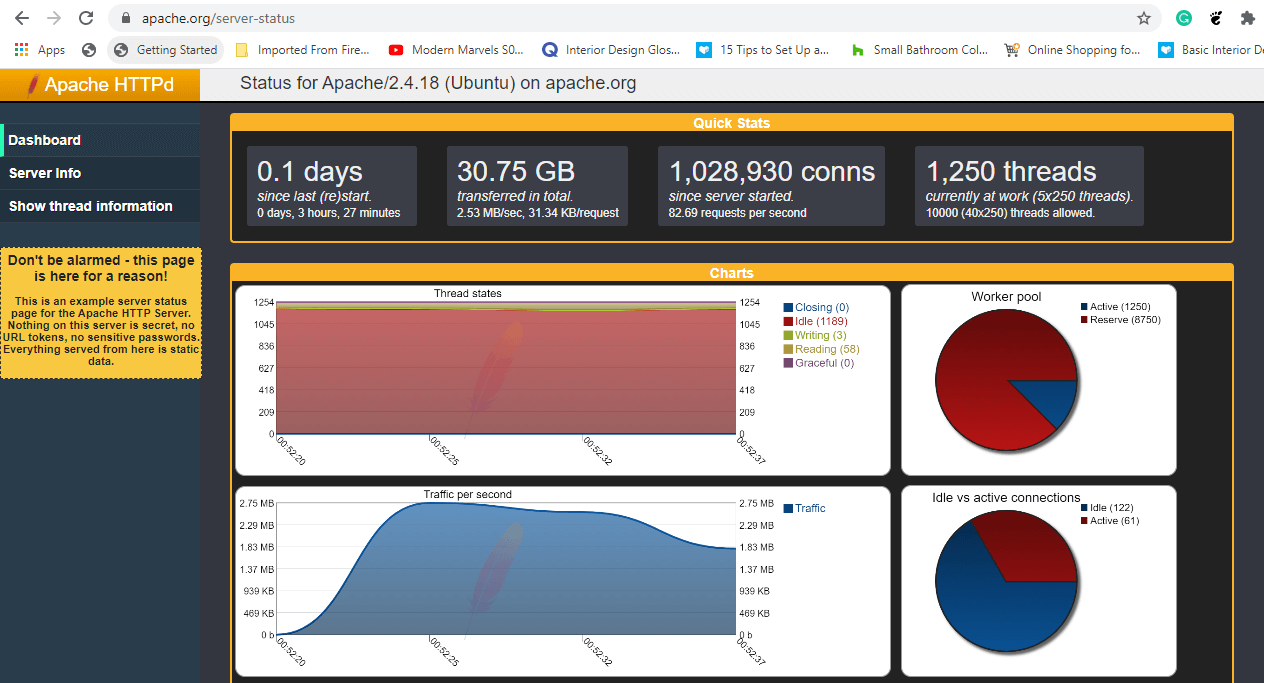
The File transfer protocol (FTP) is a protocol that enables file transfer between computers and other devices. Abhay Bhhushan, a student of the Massachusetts Institute of Technology, developed its original design in 1971. It was originally intended to enable computer users to transfer files via the ARPANET. This was the precursor of the Internet.
File transfer protocol (FTP)
File Transfer Protocol can be used to transfer files from one computer to another. It works in a client/server model. FTP is only available to clients that can connect to servers. FTP clients allow end-users to connect to the server to access files and to copy them to their own systems.
FTP was originally suggested by Abhay Binchan on April 16, 1971. He proposed it as an application protocol in the ARPANET. Later iterations of FTP added management capabilities.
Simple File Transfer Protocol
If you want to send files and folders from your computer to another one, you can use the Simple File Transfer Protocol (SFTP). This protocol allows you to send data in two directions. One direction is for files and folders on your computer, while the other direction is for files and folders on a remote server. SFTP can be used to transfer files and control user access between computers. It is an extremely popular protocol that is supported by all servers.

SFTP uses encryption with public key authentication to protect the integrity of data being transmitted. This ensures that data is not accessible to any third parties. Public key authentication also ensures that the data are not misused by any imposter. It also uses usernames as well as passwords to verify identity. It is used to transfer sensitive information between servers. It can also be used for auditing data.
Advanced File Transfer Protocols - FTPS
FTPS, an extension to FTP, uses encryption to protect communications. Secure Sockets Layer security (SSL), Transport Layer Security, (TLS) are some of the key features. It uses different authentication credentials and ports to ensure secure connections.
FTP is designed to use two ports, one for sending and one for receiving. Originally, it operated over Network Control Protocol (NCP), a simplex protocol, and used two port addresses. These ports were then assigned for two different connections. Both the sender (or receiver) compute binary values from the packets to compare them and determine if they're the same. The bytestream is stored on the receiving computer.
SFTP
Secure File Transfer Protocol (SFTP), is a protocol that enables secure file transfers. To transmit data from one computer, it uses an encrypted data stream. IT professionals are familiar with this protocol, as they use it to secure their systems and limit unauthorised access to sensitive data. It is also used in movie production companies to distribute digital films to theaters.
SFTP connects to a remote computer using a single port. The port is used by SFTP to transfer data, authentication, as well as commands over an encrypted network. This protocol is both available for server to server and client to server connections.

HTTPS
FTP is a computer protocol used to transfer files via the Internet. This protocol acts as a digital communication channel between two software programs. It's safer than using the Internet browser. It also protects data from being lost. This is the best way to move large files.
FTP uses two distinct connections, which is different from HTTP. The first connection is used for authentication and commands, while the second is used to send and retrieve actual data. HTTP differs from FTP by the fact that it can reuse TCP connections for multiple transfer. But, the basic concept is the same: Two entities send information through one connection while receiving it on the other.
FAQ
What Is Website Design Software?
Website design software is used by graphic artists, photographers, illustrators, writers, and others involved in visual media to create webpages and other digital materials.
There are two types main website design software options: desktop apps and cloud-based. Desktop apps can be installed on your local computer. They also require that you install additional software. Cloud-based apps are hosted remotely on the Internet and do not require any additional software. This makes them perfect for mobile users.
Desktop Applications
While desktop applications have more features than cloud-based options, they're not always needed. Some people prefer working exclusively on a desktop app, as they find it easier. Others like to use the same tool regardless of whether they are working on a laptop or a smartphone.
Cloud-Based Solutions
Cloud-based solutions are a great option for web designers looking to save time and money. These services allow you to edit any type of document from anywhere that has an internet connection. This means that you can work on your tablet while waiting to brew your coffee.
You will still need to buy a license if you choose to use a cloud-based program. You will not need additional licenses to upgrade to a higher version.
These programs can be used to create web pages, if you have Photoshop, InDesign or Illustrator.
How can I make a website for free?
It all depends on the type of website you are trying to build. Are you trying to sell products online, create a blog or build a portfolio of websites?
An essential website can be created using HTML and CSS. This is a combination of HyperText Markup Language (HTML) and CascadingStyle Sheets (CSS). Although HTML and CSS can be used to create simple websites, web developers prefer using a WYSIWYG editor like Dreamweaver or Frontpage.
If you don't have experience designing websites, hiring a freelance developer might be the best option. They will help you design a website that suits your specific needs.
You can either pay a flat rate per project or an hourly rate to a freelance developer. It depends on the amount of work that they do in a given time frame.
For example, companies may charge 50-100 dollars an hour. Larger projects will usually attract higher rates.
You can also find jobs on many freelance websites. You could search there first before contacting potential developers directly.
Are there any technical skills required to design and build my site?
No. All you need is an understanding of HTML and CSS. You can easily find tutorials online that teach both HTML and CSS.
Statistics
- When choosing your website color scheme, a general rule is to limit yourself to three shades: one primary color (60% of the mix), one secondary color (30%), and one accent color (10%). (wix.com)
- Is your web design optimized for mobile? Over 50% of internet users browse websites using a mobile device. (wix.com)
- It enables you to sell your music directly on your website and keep 100% of the profits. (wix.com)
- In fact, according to Color Matters, a signature color can boost brand recognition by 80%. There's a lot of psychology behind people's perception of color, so it's important to understand how it's used with your industry. (websitebuilderexpert.com)
- Did you know videos can boost organic search traffic to your website by 157%? (wix.com)
External Links
How To
How do I get started as a UI Designer?
There are two paths to becoming a UI design:
-
You can go through school and earn a degree in UI Design.
-
It is possible to start a freelance career.
For you to be able to finish school, you must attend college or university. This includes business, psychology and computer science.
Classes can be taken at either state or community universities. Some schools offer tuition-free programs while others charge tuition.
You'll need to find work once you have graduated. If you choose to work for yourself, you must build your client base. It is essential to establish a professional network so other professionals know you exist.
There are many opportunities to intern for companies that specialize on developing web applications. Many companies hire interns to gain work experience before hiring full-time workers.
Once you have built up a portfolio of your work, it will help you land more jobs. Your portfolio should include work samples as well as details of the projects that you have worked on.
It's a smart idea for you to send your portfolio by email to potential employers.
Freelancers need to promote themselves. You can list your services on job boards such Assure, Guru, Freelance, Guru and Upwork.
Freelancers are often assigned by recruiters posting job openings online. These recruiters look for qualified candidates to fill specific positions.
These recruiters provide candidates with a project description that details the position's requirements.
Freelancers are not required by law to sign any long-term agreements. If you want to move ahead, it's best to negotiate an initial payment.
Many designers prefer to work directly and not through agencies. While this may seem ideal, many people lack the necessary skills.
Agency workers often have extensive industry knowledge. They can also access specialized training and resources that will allow them to produce top-quality work.
In addition to these benefits, agency workers usually receive a higher hourly rate.
Working with an agency has the downside of not being able to contact your employer directly.
As a UI designer you need to be motivated, creative, flexible, detail-oriented and communicative.
It is also important to have great verbal and written communication skills.
UI designers are responsible in designing websites through the creation of user interfaces (UI), as well visual elements.
They are also responsible in ensuring that the site meets all users' requirements.
This involves understanding the information users need and how to make your site work.
Wireframes can be created by UI designers with a variety tools. Before beginning to design, they use wireframing.
Online wireframe templates make it simple to create your own wireframes.
Some designers focus solely on UI design, while others combine UI design with graphic design.
Photoshop is a popular software used by graphic designers for editing images.
To create pages and layouts, they then use Adobe InDesign.
Photographers capture images using digital cameras or DSLRs.
They then upload the images to a program for photo editing, where they add text captions and filters.
The photographer saves the image to a file compatible with the website.
When building a website, it is essential to consider all aspects of the design process.
This includes research planning, wireframing and prototyping, as well as testing, coding, content generation, and publishing.
Research – Before starting any new project, it is important to conduct extensive research.
Planning – After you've done your research you'll be ready to develop a plan.
Wireframing is a preliminary sketch for a web page, or application.
Prototyping – Prototypes are used to verify that the final product is consistent with the original vision.
Testing - Multiple rounds of testing should be done on the prototype to make sure it works properly.
Coding - Coding refers to the process of writing computer code.
Content Creation: Content creation can include everything from copywriting to managing social media profiles.
Publishing entails uploading files to a server and ensuring the site is accessible.
You will need to have a broad knowledge of different projects in order as a freelance UX/UI developer.
For example, some companies only require wire frames, whereas others require full prototypes.
You may be required to perform specific tasks depending on the project you accept.
You might, for example, be asked to create multiple wireframes if you're being hired to do wireframe design.
If you're required to build a complete prototype of a website, you may also be required to design a fully functional version.
Strong interpersonal skills are important regardless of the project type.
Since most clients hire freelancers based on referrals, you must build solid relationships with potential employers.
In addition, you must be able to communicate effectively both verbally and in writing.
A portfolio is an important part of any freelancer's arsenal.
It is a showcase of your work and a demonstration of your ability produce high-quality outputs.
Online portfolios can help you do this.
You can find similar websites to yours online to help you get started.
You can then search these websites to find out which one offers its services.
Once you identify what you think are the best practices, go ahead and adopt them.
It's also helpful to include links to your portfolio within your resume.